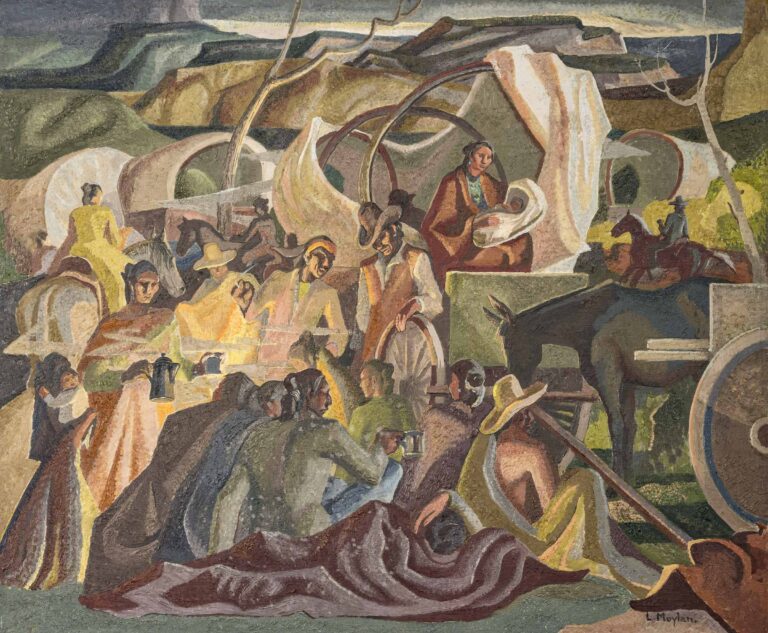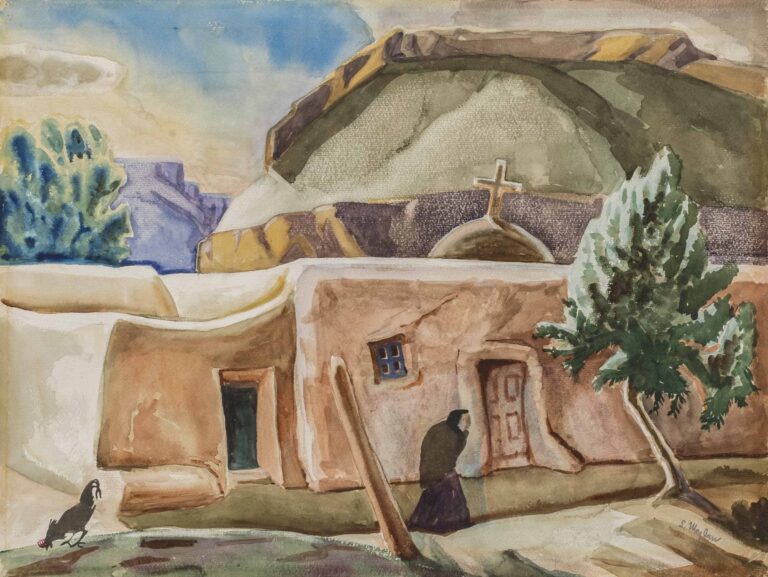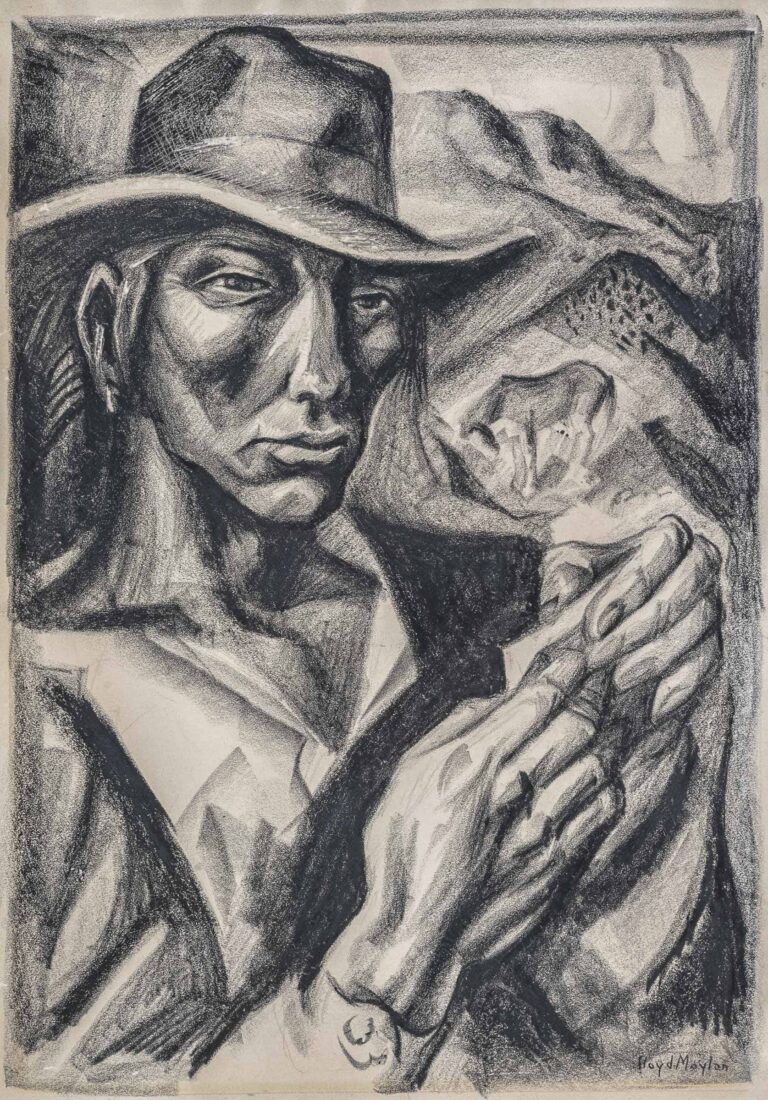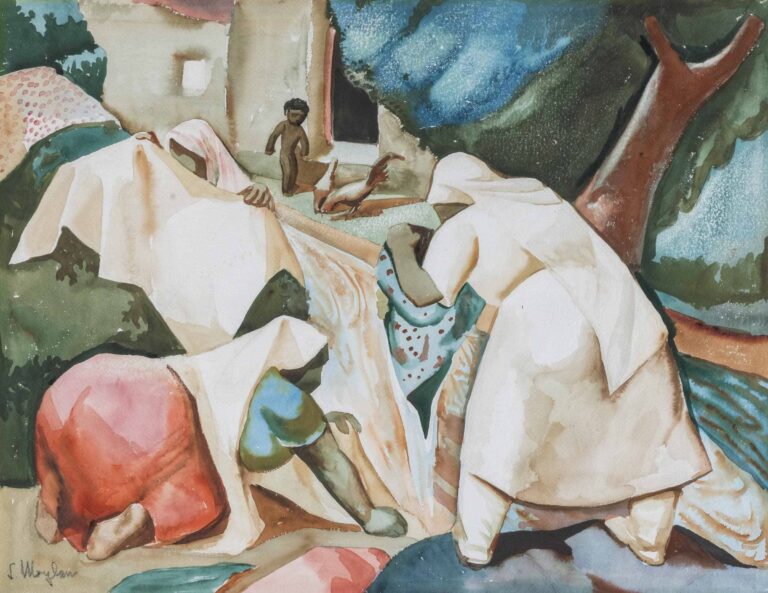In developing a career as a Western American artist, Lloyd Moylan spent a good amount of time and canvas documenting the movements of Diné (Navajo) people in and around the Navajo Nation.1 He pictured people traveling the route through Long House Valley along the northern part of the Navajo Nation at least three times. At first glance, Journey Through Longhouse Valley appears to be a straightforward depiction of a group of adults and children riding on horseback through the sage- and rabbit-brush. But Moylan’s composition raises questions on closer look. Why do the woman and man in the left foreground turn to face the viewer? If something caught their attention, then why is the woman’s horse not alert to the disturbance? In fact, almost everything about the woman’s appearance is out of place—the way she sits her horse, her ceremonial jewelry, and the way she holds the baby in her arms instead of in a cradleboard. The man’s posture is also peculiar—his foot is out of its stirrup and he has fully shifted his position so it is opposite his moving horse. One way to interpret these incongruities is that the artist, for his own reasons, imposed a portrait of a nuclear family—mom, dad, and baby—onto the scene.




















